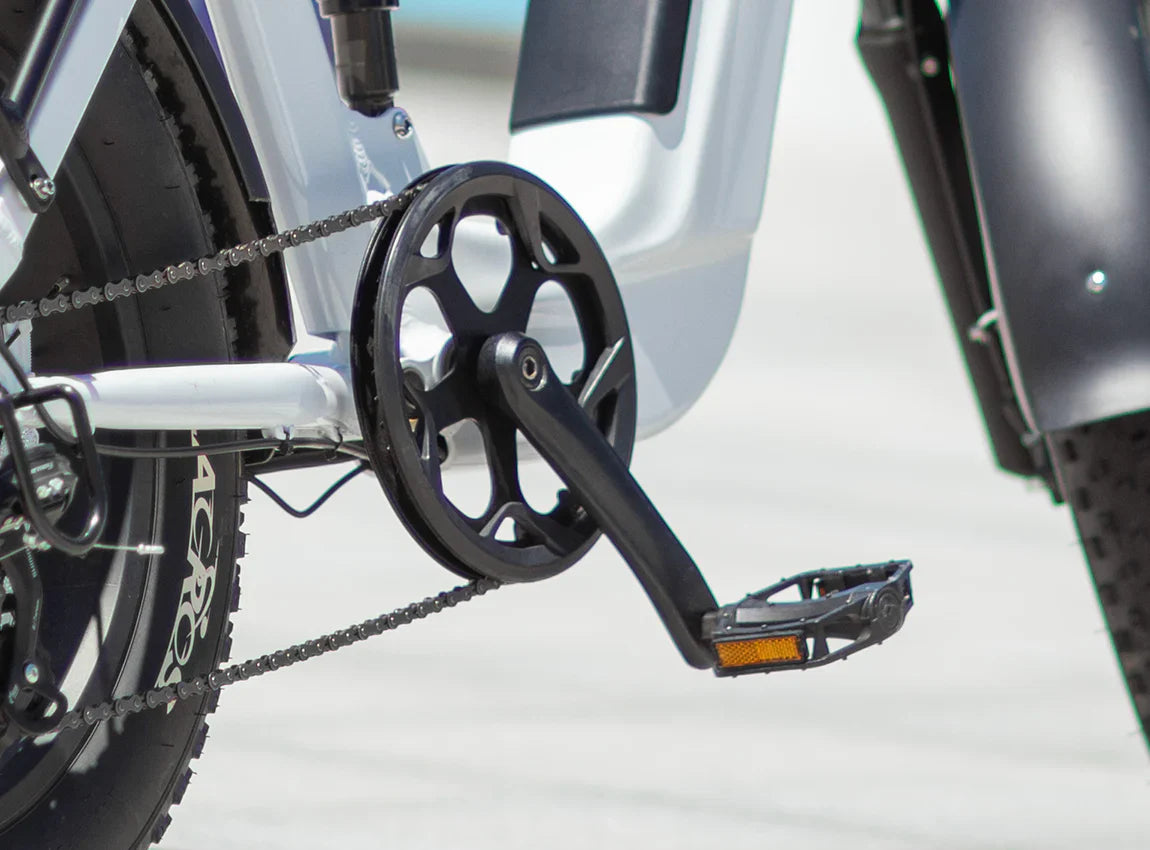Electric bikes are rapidly transforming the way we move, offering convenience, sustainability, and fun. But a common question many riders ask is: Can e-bikes recharge themselves while riding? This article explains how that works and what to expect.
How Do Electric Bikes Normally Charge?
Most e-bikes charge through a plug-in lithium-ion battery system. Riders remove or plug in the battery at home or at a charging station, much like charging a laptop or smartphone. Depending on the battery capacity and charger, an e-bike battery typically takes between 3 and 7 hours to fully recharge.
This plug-in method remains the most reliable way to power an e-bike since it provides consistent energy without depending on terrain, speed, or braking.
Do E-Bikes Charge When You Pedal?
It’s natural to assume that pedaling could generate electricity for the battery—after all, some exercise bikes do. However, in practice, most e-bikes do not charge when you pedal.
The reason is efficiency: converting pedaling energy into electricity adds resistance and complexity, which can make riding harder and reduce overall system efficiency. In typical setups, your pedaling interacts with pedal-assist systems that reduce strain on the rider and help manage battery use rather than recharge the battery.
Some experimental designs and prototypes claim “self-charging e-bikes,” but their real-world benefits are limited and rarely practical for everyday commuting or long rides.
How Does Regenerative Braking Work?
One of the main technologies that can recharge an e-bike while riding is regenerative braking, sometimes described as a KERS (Kinetic Energy Recovery System). The basic idea:
- When you brake, instead of dissipating all kinetic energy as heat, the motor can operate as a generator.
- That generator converts part of the kinetic energy into electrical energy.
- The returned electricity is routed back into the battery as a small recharge.
This concept mirrors systems used in hybrid and electric cars, but on a much smaller scale for e-bikes.
Why Regenerative Charging Has Limitations on E-Bikes
Although regenerative braking sounds promising, there are several practical limitations that keep it from replacing plug-in charging:
- Low mass & speed: E-bikes are relatively light, so there is less kinetic energy available to recover compared with cars.
- Small battery gains: Typical energy recovered is modest — often only 5–10% (or less) of total battery capacity over a typical ride.
- Added complexity & weight: Regenerative systems add components that increase cost and sometimes the bike’s weight.
- Reduced pedaling efficiency: Attempting to harvest pedaling energy can introduce resistance, making human-powered input less pleasant and efficient.
Because of these factors, regenerative charging is usually a niche feature rather than a mainstream solution for everyday riders.
Which E-Bikes Feature Regenerative Braking?
Regenerative braking is not universal. You’ll most commonly find it in:
- Hub-motor commuter e-bikes that are designed for city stop-and-go riding.
- Cargo or heavy-duty e-bikes where higher mass makes energy recovery slightly more meaningful.
- Experimental or niche models from startups marketing self-charging concepts.
Notably, many popular mid-drive motor e-bikes do not support regenerative braking because of drivetrain design and efficiency trade-offs.
The Future of Self-Charging E-Bikes and Innovations Ahead
Today’s self-charging systems are modest, but several promising directions could improve practicality:
- Advanced KERS designs with better recovery efficiency and smarter control logic.
- Solar integration — panels built into frames, racks, or accessories that provide trickle charging while parked or riding.
- Improved battery chemistry that can store small trickle charges more effectively without degradation.
- AI-assisted controllers that optimize when to harvest and when to conserve energy for safety and longevity.
As sustainable transport demand grows, expect incremental but meaningful improvements in how e-bikes manage and reclaim energy.
FAQs on E-Bikes That Charge While Riding
Do e-bikes charge when going downhill?
Yes — but only if the e-bike has regenerative braking. The amount of energy recovered while descending is typically small compared to overall battery consumption.
Can pedaling fully recharge an e-bike?
No. Human pedaling cannot realistically generate enough electricity to significantly recharge an e-bike battery during normal riding.
Are self-charging e-bikes available now?
Some models and prototypes exist, but they are relatively rare and often more expensive. They do not remove the need for conventional plug-in charging.
Does regenerative braking affect safety?
Regenerative systems can slightly change braking feel, but reputable designs account for safety and aim to preserve predictable braking performance.
Conclusion
So, do e-bikes charge while riding? Technically, yes — primarily via regenerative braking and in a few experimental designs. In practical terms, most riders should not expect self-charging to replace traditional plug-in charging anytime soon.
That said, ongoing advances in regenerative technology, KERS systems, and solar integration may make more self-sufficient e-bike designs increasingly practical in the years ahead.






Share:
Why Are Electric Bikes So Heavy? Understanding E-Bike Weight
How to Choose a Comfortable E-Bike: A Complete Guide (2025)